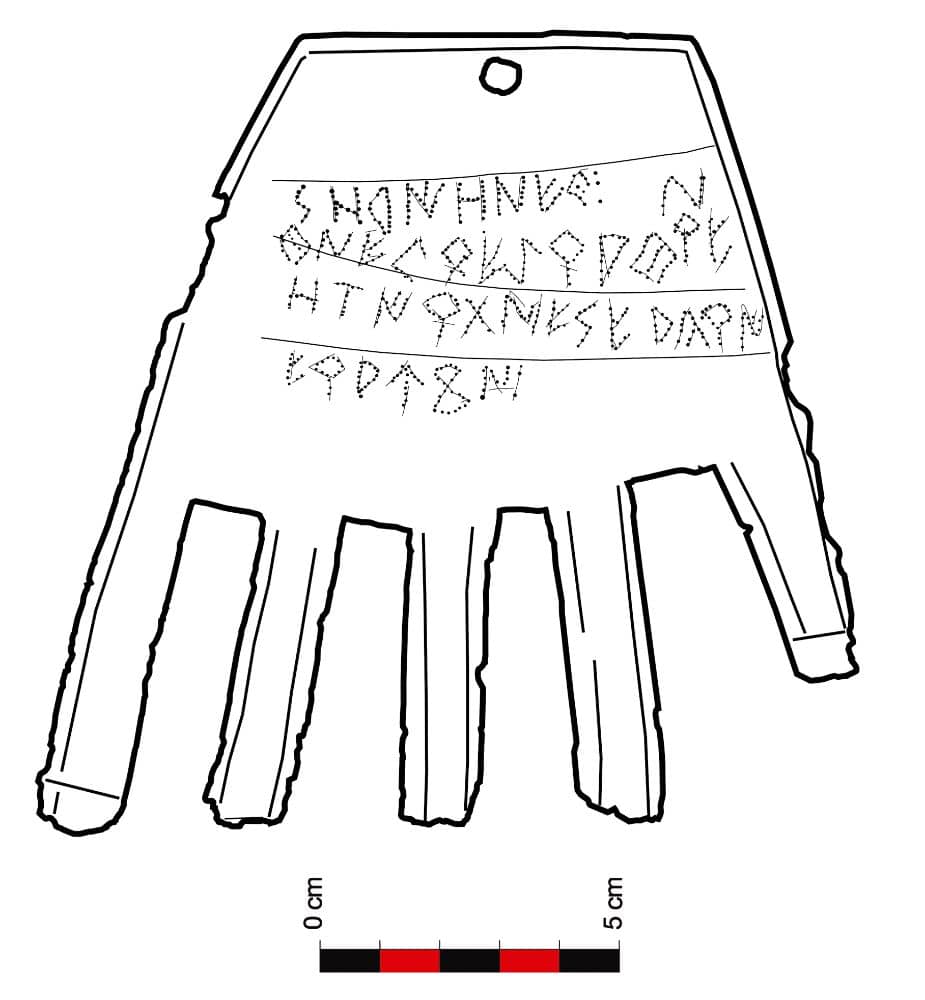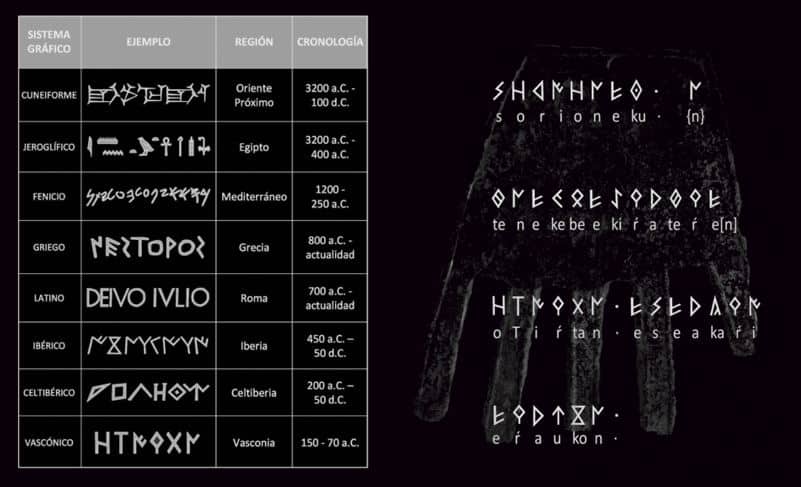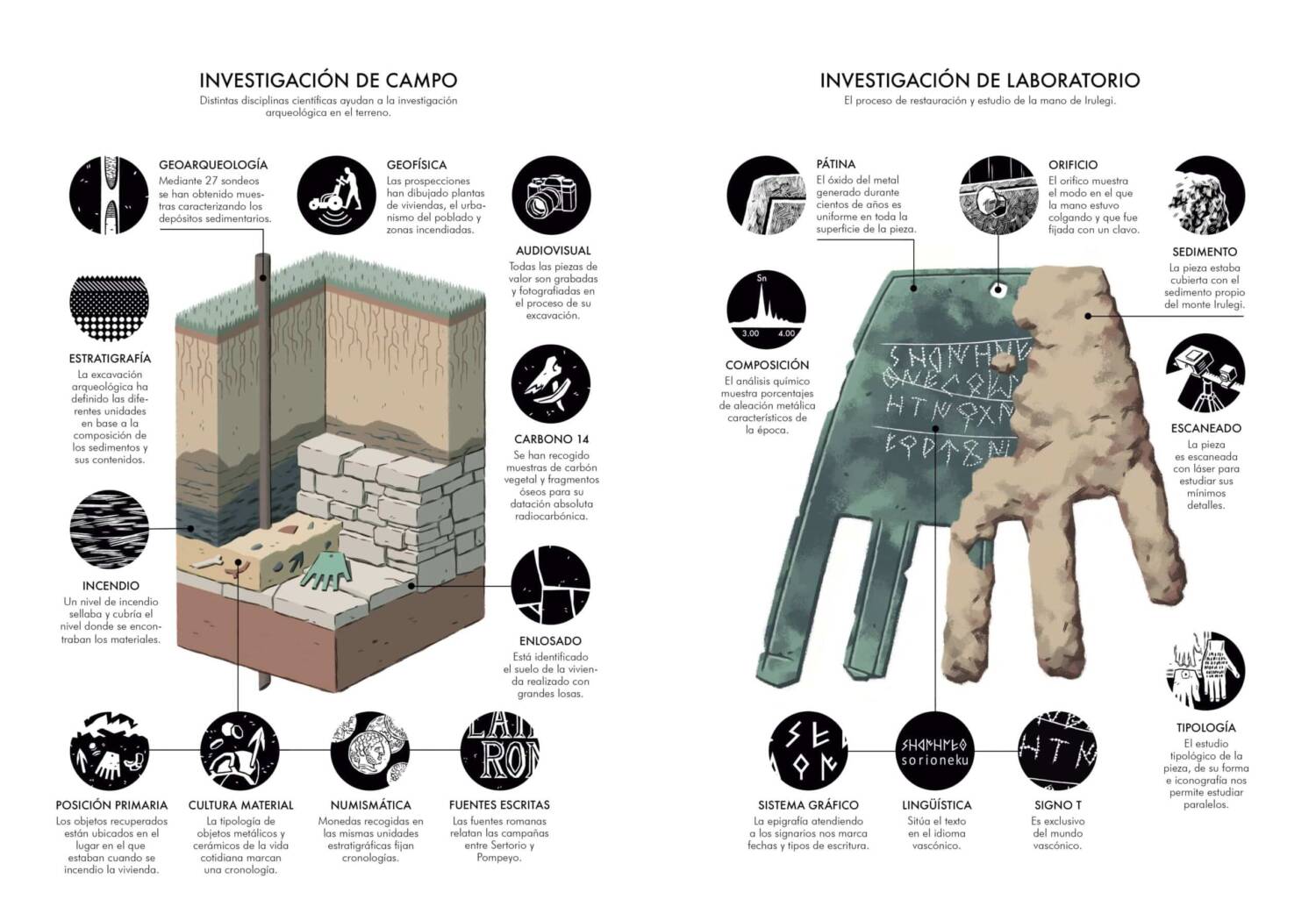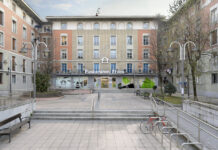So, when the news broke yesterday in local media that a text in Vasconic (which, in our ignorance on the topic, we didn’t know is how ancient Basque is called), we have to admit our heart skipped a beat.
And finally, today, the news has hit the world stage. We were hardly surprised that it was The Guardian. We always say they’re one of our favorite media outlets, though we have to admit that reading that an object that existed millennia before Spain did could be called “Spanish,” just like we wouldn’t call a dinosaur whose bones were found in Spanish “Spanish.”
But words, written in Vasconic, almost 2100 years ago, found by the Aranzadi Science Society just a few miles from Pamplona? That can mean only two things.
Firstly, that the discovery is well documented and supported, especially after the controversy, and fiasco, that were the Iruña-Veleia findings, which popped into everyone’s heads (including ours). Aranzadi, however, always works to the highest standards, so we’re sure the care taken in this discovery shall shield it from any similar controversy.


The second, that the discovery of these words written in Vasconic, or proto-Basque, or ancient Basque, however it’s called, is going to mark a turning point in the knowledge of and research approaches taken when researching our language.
Moreover, as an extra bonus, this discovery, in one fell stroke, undoes a significant part of the “late Basquification” theories which posit that the Basque language reached this part of the world from the other side of the Pyrenees in the 6th or 7th centuries, thereby denying that the Basques had lived in their own country before that time.
A more “academic” version of this theory states that the Basques descend from the deserters of Hannibal’s army. In the end, all these theories work to back up the ideology that many defend that state that the Basques aren’t as old as they say.”
«Sorioneku» Euzkadi
The words were all engraved in this bronze hand with a single technique; so far, only one word has been disciphered, and it not only has a form that is almost exactly the same in modern Basque, but which even seems to be a declaration of intent: sorioneku, which looks amazingly like modern “zorioneko,”o which means “fortunate” or “lucky.”


There can be no doubt that this discovery has brought lucky to the culture and history of this country. In one fell swoop, it has been proven that:
- Basques lived and spoke Vasconic (ancient Basque) in the heart of our country since the first third of the first century AD,
- the Basques were not illiterate, but had a written language they used and understood,
- Basque has become the oldest spoken and written language of all those spoken on the Iberian peninsula.
Not too bad. It’s hard to imagine that a piece of bronze that measures only 141 × 127.9 mm (5.5″ × 5.0″), is only 1 mm thick, and weighs but 35.9 g (1.27 oz).
We’ll leave you with the article in The Guardian, and the huge amount of documentation that the Aranzadi Society has prepared about this discovery, including an interesting video.
Zorionak eta Eskerrik Asko Aranzadi
The Guardian – 15/11/2022 – Great Britain
Hand of Irulegi: ancient Spanish artefact could help trace origins of Basque language
More than 2,000 years after it was probably hung from the door of a mud-brick house in northern Spain to bring luck, a flat, lifesize bronze hand engraved with dozens of strange symbols could help scholars trace the development of one of the world’s most mysterious languages.
(Follw) (Automatic translation)
Aranzadi – 14/11/2022 – Euskadi
La mano de Irulegi, el testimonio escrito más antiguo de lengua vasconica


Un equipo de arqueología de la Sociedad de Ciencias Aranzadi excava desde el 2017 un poblado de la Edad Del Hierro ubicado en el monte de Irulegi, en el valle de Aranguren (Navarra).
(Follow) (Automatic translation)
Aranzadi – 14/11/2022 – Euskadi
La escritura en la mano
En el monte Irulegi, ubicado en el Valle de Aranguren, la Sociedad de ciencias Aranzadi, que cumple actualmente 75 años, recuperó el castillo medieval que se encuentra en la cima de la montaña. in embargo, Irulegi ha seguido siendo un lugar arqueológicamente interesante para los especialistas. A partir del 2017 el equipo de arqueología de Aranzadi comenzó a excavar al pie del castillo donde en los últimos años se ha localizado un poblado de la Edad del Hierro. Este yacimiento está datado en el siglo I a.C, en una época anterior a la llegada de los romanos y en el lugar donde las fuentes clásicas ubicaban el territorio de los vascones.
(Follow) (Automatic translation)
LA MANO DE IRULEGI. Documental
Last Updated on Nov 16, 2022 by About Basque Country































